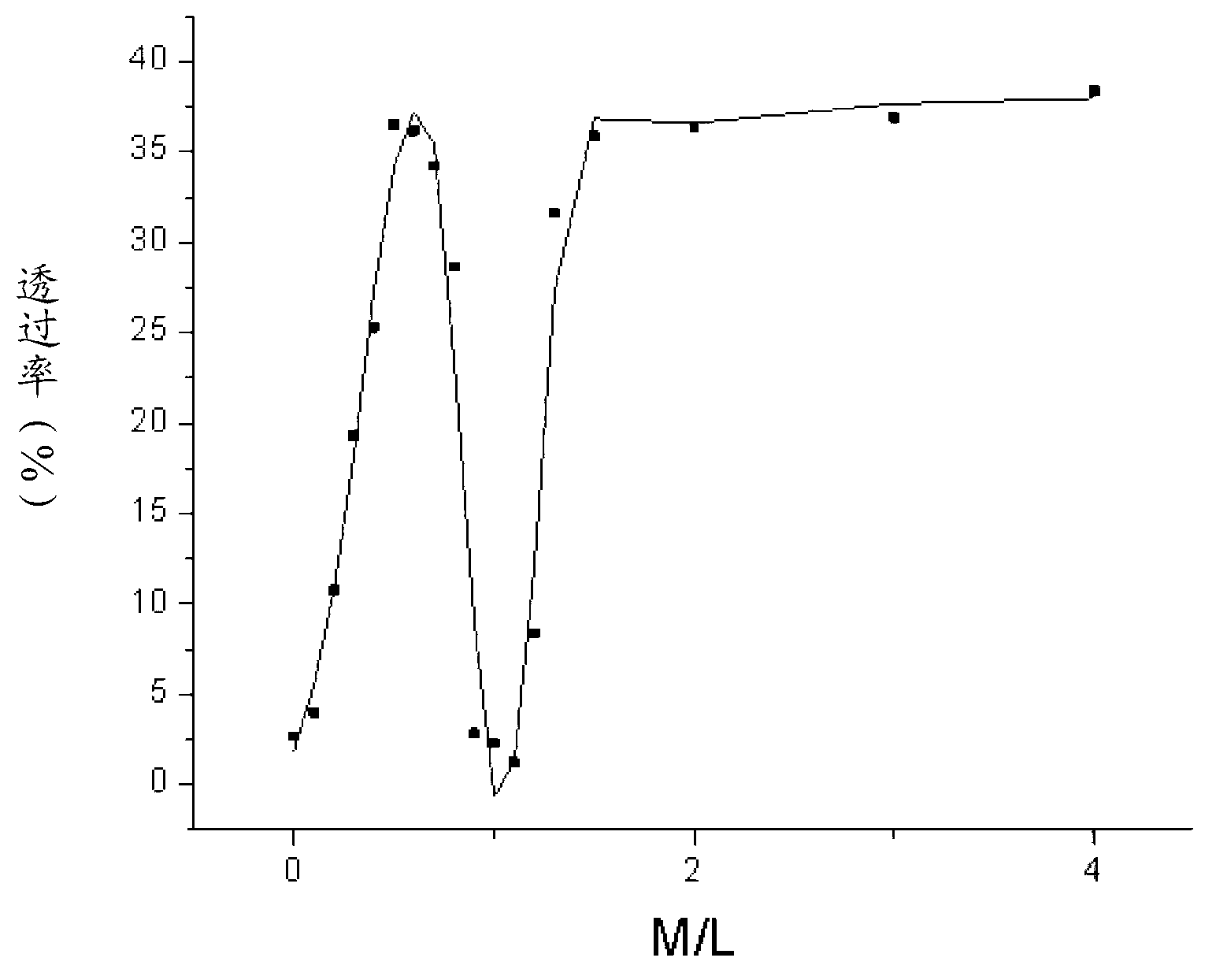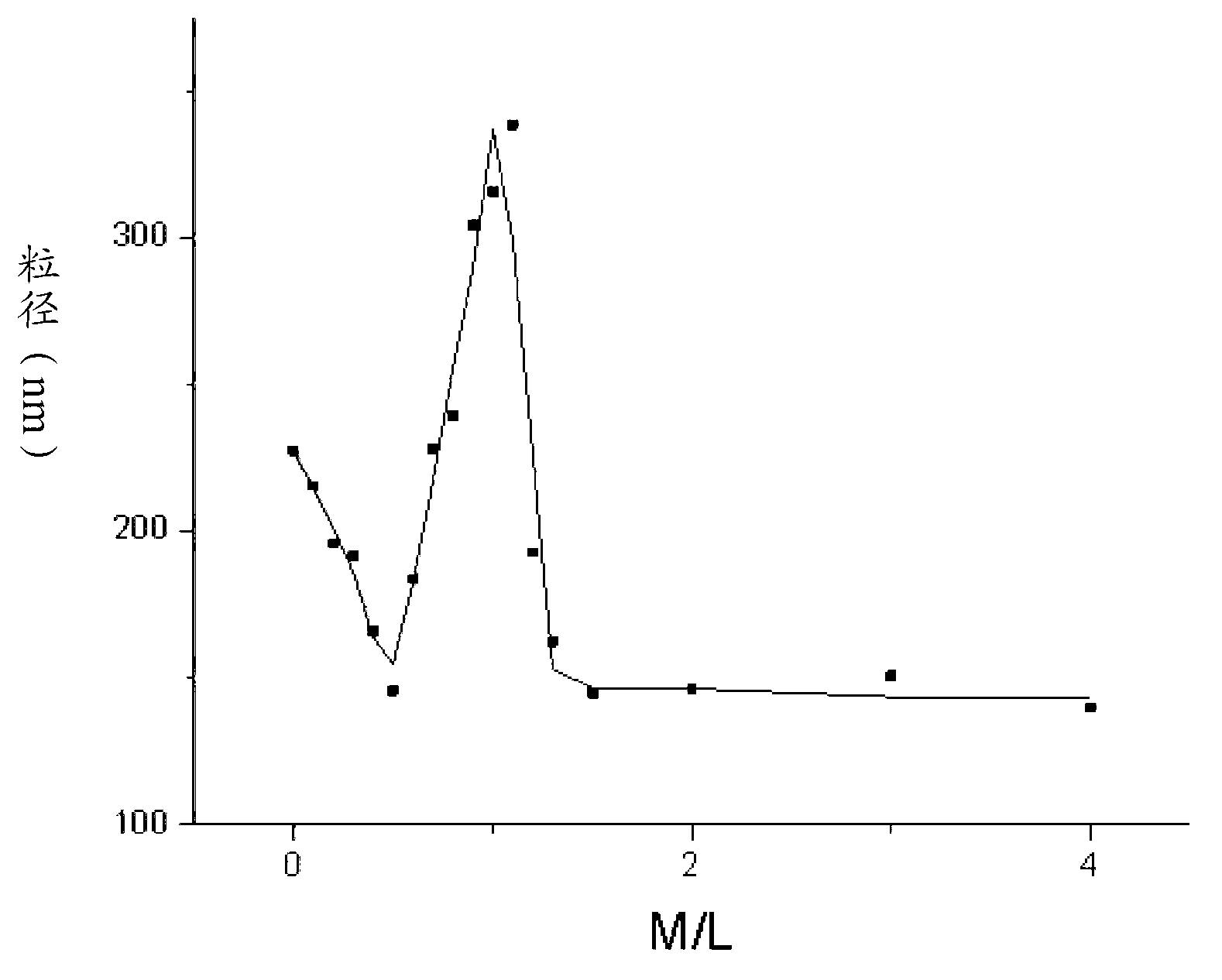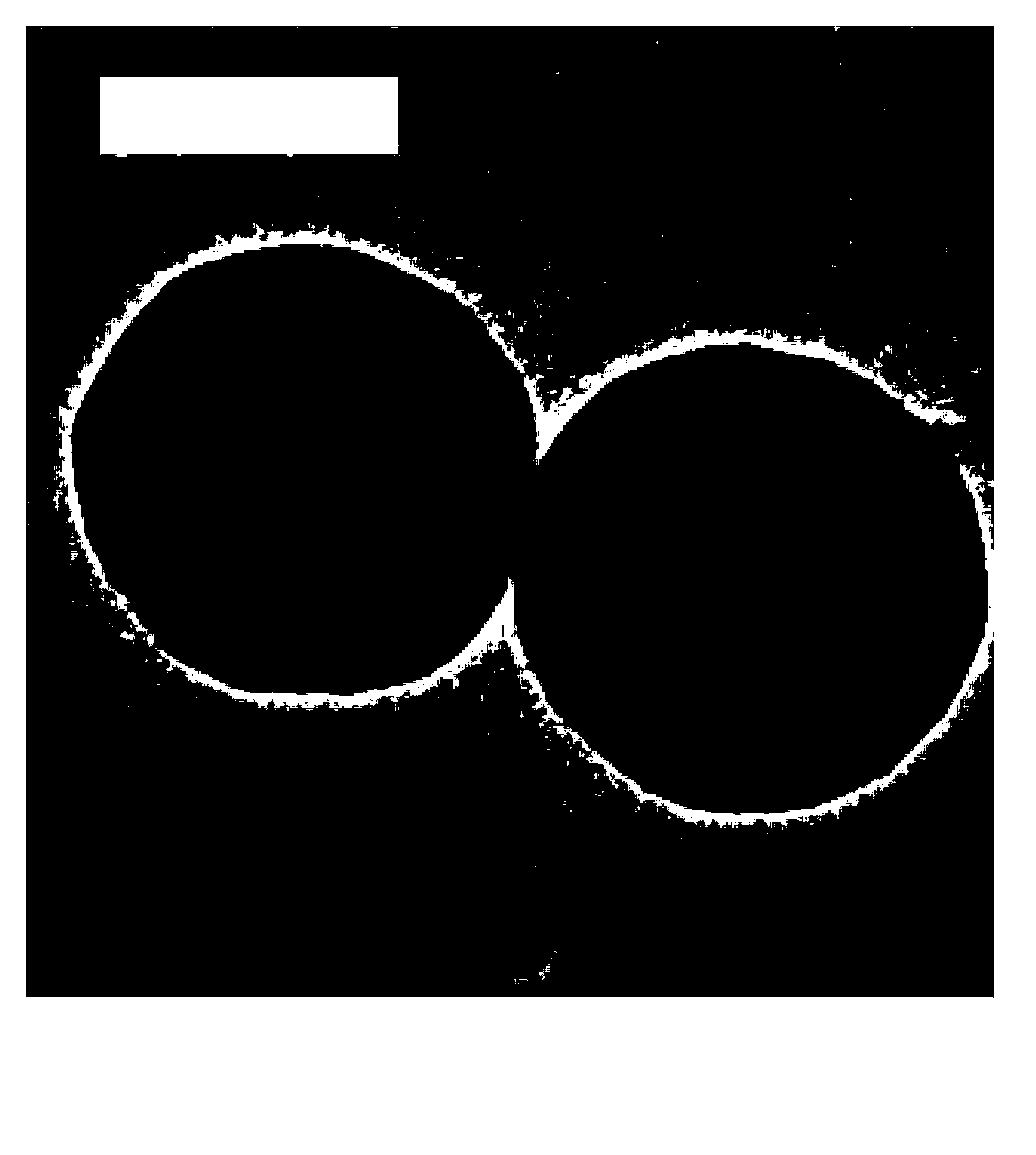Amphipathic nano-micelle with POSS based capping end sensitive to metal ions and preparation method of amphipathic nano-micelle
A kind of metal ion, nano micelle technology, applied in the field of amphiphilic nano micelle and its preparation
- Summary
- Abstract
- Description
- Claims
- Application Information
AI Technical Summary
Problems solved by technology
Method used
Image
Examples
Embodiment 1
[0041] (1) Dissolve 5g POSS, 0.56g maleic anhydride and 0.028g p-diphenol in 40mL benzene, pass nitrogen gas to remove oxygen, react at 80~110℃ for 12~24 hours, after distilling off benzene, use a volume ratio of 1:1 petroleum ether / diethyl ether mixed solution for extraction and centrifuge to separate the precipitate to obtain POSS-MA;
[0042] (2) Dissolve 1g POSS-MA, 1.64g polyethylene glycol (molecular weight 2000, ie PEG2000), 0.0205g p-diphenol, 0.011g toluenesulfonic acid in 40mL benzene, blow nitrogen to remove oxygen, at 125~140℃ After reacting for 24~36 hours, after benzene was removed by distillation, extraction was carried out with a mixed solution of petroleum ether / diethyl ether with a volume ratio of 1:1, and the precipitate was separated by a centrifuge to obtain POSS-MA-PEG2000;
[0043] (3) 2g POSS-MA-PEG2000 (6.77×10 -4 mol), 2,6-pyridinedicarboxylic acid (DPA, 6.77×10 -4mol), 0.0064g p-toluenesulfonic acid, 0.0106g p-diphenol were dissolved in 40mL cycloh...
Embodiment 2~ Embodiment 10
[0048] Steps (1) to (5) are the same as in Example 1, but the metal ion / amphiphile molar ratio (M / L) in step (6) is changed, and a series of mixed solutions with different M / L are prepared. These mixed solutions are respectively Using ultraviolet spectrophotometer (UV) to measure transmittance, dynamic photomorphism (DLS) to measure particle size, and transmission electron microscope (TEM) to observe assembly morphology, the metal ion responsiveness was compared and studied simultaneously. The results are shown in the following table:
[0049] Example 2 3 4 5 6 7 8 9 10 M / L 0 0.1 0.3 0.6 0.8 1.0 1.2 1.5 2.0 UV (T%) 2.69 4.01 19.31 36.17 28.66 2.33 8.38 35.85 38.38 DLS (nm) 227.5 215.6 191.6 183.9 239.3 315.8 192.9 144.8 139.9
[0050] Carry out comparative analysis in conjunction with the result of embodiment 1, transmittance and particle size change as figure 1 with figure 2 shown. Such as image 3 with Fi...
Embodiment 11~13
[0052] Step (1) to step (5) are the same as in Example 1, change ZnCl in step (2) 2 for FeCl 3 , CuCl 2 、 TiCl 4 , respectively prepare a mixed solution with M / L of 0.5. The above-mentioned mixtures were measured by ultraviolet spectrophotometer (UV) to measure the transmittance, dynamic light state radiation (DLS) to measure the particle size, and transmission electron microscope (TEM) to observe the assembly morphology to compare and study their metal ion responsiveness simultaneously. The results are shown in the following table Shown:
[0053] Example 11 12 13 Metal Ion Type FeCl 3 CuCl 2 TiCl4 M / L 0.5 0.5 0.5 UV (T%) 33.17 26.32 38.59 DLS (nm) 194.1 245.8 138.6
PUM
| Property | Measurement | Unit |
|---|---|---|
| particle diameter | aaaaa | aaaaa |
Abstract
Description
Claims
Application Information
 Login to View More
Login to View More - R&D
- Intellectual Property
- Life Sciences
- Materials
- Tech Scout
- Unparalleled Data Quality
- Higher Quality Content
- 60% Fewer Hallucinations
Browse by: Latest US Patents, China's latest patents, Technical Efficacy Thesaurus, Application Domain, Technology Topic, Popular Technical Reports.
© 2025 PatSnap. All rights reserved.Legal|Privacy policy|Modern Slavery Act Transparency Statement|Sitemap|About US| Contact US: help@patsnap.com



